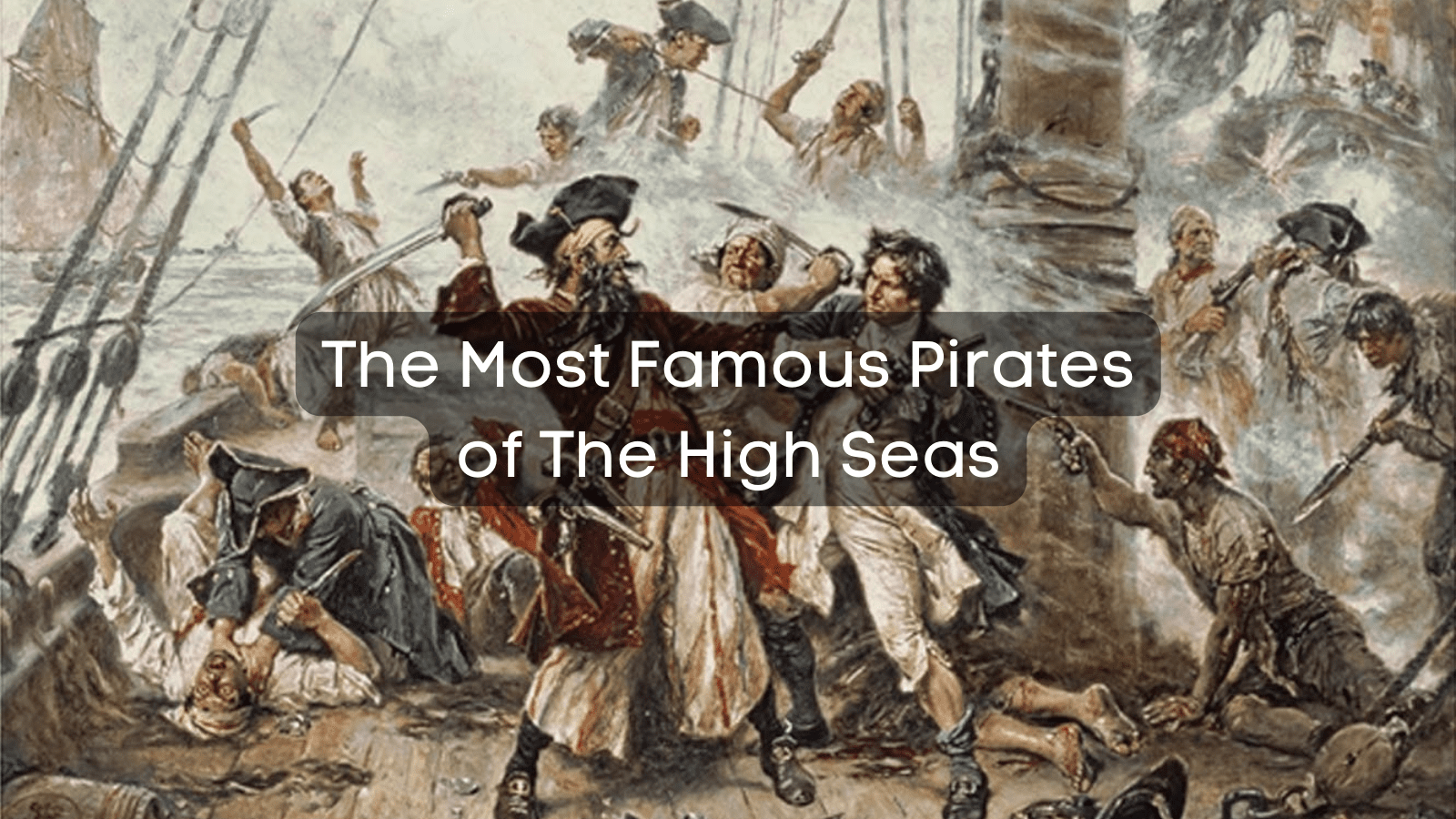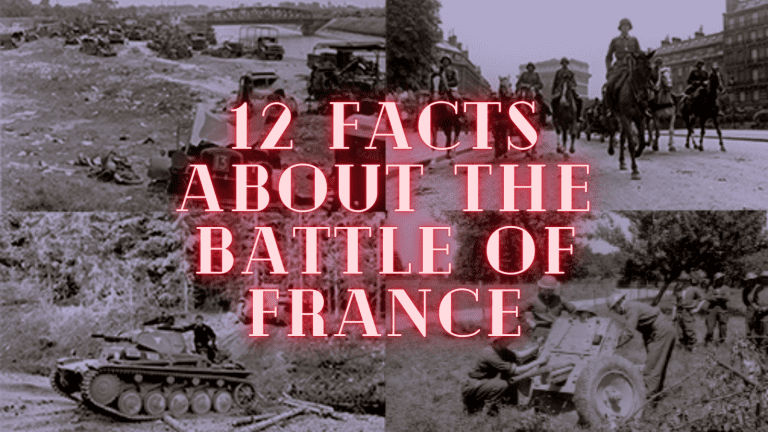The 9 most Famous pirates of the high seas
Privateers, buccaneers, and pirates. They gained fame and notoriety by raiding on the high seas across the globe. The 18th Century is considered the Golden Age of Piracy and is the era where many of the most famous pirates operated.
Some were sponsored by the state to wreak havoc and chaos on the country’s enemies. Others turn to piracy, intending to make as much money as they could – no matter the harm they inflicted.
The reality of life as a pirate was a lot harsher and grimmer than fantastic adventure stories would have us believe. There was a dark side to the pirating world, and many pirates were also slave traders.
Successful pirates, many of whom began their careers as privateers, were able to prey on merchant’s vessels to make a living. This was possible as a result of the increased amount of shipping that occurred throughout the Atlantic and in the Caribbean.
Henry Morgan
These days Captain Morgan may be more famous as a brand of rum. However, Henry Morgan was one of the most famous pirates of the Caribbean. He had his main base in Jamaica and would raid both shipping and settlements on the Spanish Main. With his stolen wealth, he purchased Sugar Plantations in Jamaica and eventually was appointed Lieutenant Governor of the island.
Henry Morgan was born in Wales sometime around 1635. It is quite possible that he was kidnapped as a young man in Bristol and taken to Barbados, where he was sold as a servant. His origins are somewhat unclear.
However, he ended up in the Caribbean; he certainly became involved with a group of privateers led by Christopher Myngs.
By 1663 he had become a privateer captain.
Privateers were given a license to attack ships of a certain country or countries. They would then take the proceeds ashore, which would be split between the government and the captain. The captain would then share his portion with his crew.
Henry Morgan’s main targets were Spanish ships, particularly from Panama.
When the English signed a peace treaty with Spain, Charles II ordered Morgan’s arrest as an attempt to keep his new friends happy. Morgan was taken back to London but no court case was ever brought against him. Instead, the King decided to knight Henry Morgan.
Anne Bonny
Anne Bonny is probably the most famous female pirate.
She was born in Ireland around 1700 and arrived in the Province of Carolina when she was ten years old. Like many of these pirates, records and facts are often in short supply. But it seems that her father grew wealthy and purchased a plantation.
At thirteen, she may have stabbed a woman to death with a knife. She married a simple sailor called James Bonny and ended up being disinherited by her father. A story that is associated with Anne Bonny is that she set her father’s plantation on fire as revenge.
After a series of unfortunate events, Anne and her husband found themselves in Nassau, in the Bahamas, where they began associating with pirates.
There, she had her first encounter with Calico Jack, who would later become her lover. It is even stated that he paid her spouse to get her divorce so that he could marry her.
In the end, she ended up escaping the island with Calico Jack, and in order to become a member of his crew, she pretended to be a man and dressed in male attire. Another notorious female pirate named Mary Read, with whom Anne has had a long-standing association, was sailing aboard that ship as well.
After Anne Bonny discovered she was pregnant, it was no longer possible to conceal the fact that she was a woman. Calico Jack took her to Cuba, where she gave birth to her child.
The entire gang was apprehended in October of 1720 and sent to Jamaica, where they were tried for their crimes and sentenced to death by hanging. There, she begged for her life by claiming that she was expecting a child at the time. The judge granted her request for a stay of execution and agreed with her request.
The fact that there is no record of either her execution or her release, or even if she gave birth, lends an air of mystery to her fate and contributes to the air of fascination that surrounds her. It is true that a ledger records that Ann Bonny was laid to rest on December 29th, 1733, in the same town in Jamaica that was the location of her trial and where she was found guilty. It is not entirely apparent whether or not this is the same person. There are stories that she ended her days in the mainland United States.
Sir Francis Drake
Francis Drake was far more than the pirate who became known as El Draque to the Spanish.
He was an explorer, naval officer and politician. He is also involved in several controversies. He was present and probably took part in the Rathlin Island massacre in 1575, and he also profited from the slave trade.
He is best remembered for the circumnavigation of the globe and his role in the defeat of the Spanish Armada.
His ship, The Golden Hind, attacked many Spanish ports in their South American colonies. Near Lima, he captured one Spanish ship with a cargo of gold estimated at being worth over 7 million in today’s values.
His most profitable capture was the Cacafuego, which contained a staggering eighty pounds of gold, a golden crucifix, Jewels, Chests of Plate, and 26 tons of silver.
Such were his successes against the Spanish, Elizabeth I knighted him onboard his ship on his return to Deptford. Philip of Spain put a massive price on his head.
He died of dysentery off the coast of Portobelo in Panama. He was buried, in full armour, at sea.
Today, modern-day treasure hunters still search for his coffin.
Calico Jack Rackham
John Rackham is better known as Calico Jack. He has a long association with two female pirates, Anne Bonny and Mary Read.
He was English, and it is estimated he was born around 1682.
The first record of him is onboard the ship of pirate Charles Vane in 1718 in the Bahamas. He lead a mutiny against Vane when he fled from a massive French man of war vessel. The men sided with Rackham, and he became captain.
In 1719 he obtained a commission from Governor Woodes Rogers in the Bahamas. These were issued to stop pirates from attacking British ships.
This did not last long. In September 1720, Rogers issued a proclamation declaring Calico Jack Rackham and his crew pirates. They were hunted down by pirate hunter Jonathan Barnet.
Rackham’s ship was captured after a short battle on the 31st of October 1720. They were taken to Lucea, Jamaica.
Rackham was executed on the 18th of November 1720, and his gibbeted body was displayed.
Mary Read
Mary Read is sometimes referred to as Mark Read. Why? Because she was another female pirate associated with John Calico Jack Rackham, that was forced to dress as a man to serve on the pirate ships.
Mary Read was originally from England, and she started passing herself off as a man so that she could inherit money. It was a practice that she couldn’t get out of. As a teenager, she again masqueraded as a male in order to join the British Army.
She only stayed married for a short time, and after her spouse passed away, she moved to the Caribbean.
After five years, she eventually met Calico Jack and became a member of his crew while concealing her identity as a man.
She was arguably more successful than Anne Bonny when it came to hiding her appearance. Because when Calico Jack got suspicious of their relationship, Bonny was obligated to tell him that Mark Read was, in reality, a woman.
Mary Read made the claim that she was pregnant to obtain a reprieve from the sentence of death that had been handed down to Calico Jack and his crew following their capture and conviction.
She succumbed to the fever while she was incarcerated. It is not known for certain if she was, in fact, pregnant or if she had delivered the child.
Blackbeard
Blackbeard is undoubtedly of the most famous pirates.
Edward Teach, Blackbeard’s real name, was an English pirate who is closely associated with Benjamin Hornigold. Edward Teach joined Hornigold’s crew around 1716, and he made Teach captain of a sloop that had been captured.
Edward Teach captured a French slave ship La Concorde and renamed her Queen Anne’s Revenge. He added guns and a crew of 300. It was now he began going by the name of Blackbeard due to his appearance.
He famously led the blockade of Charles Town, South Carolina, where he all but ransomed the town’s inhabitants. He accepted a royal pardon and began living in Bath, North Carolina.
Yet he couldn’t stop his piracy and was soon sailing again. The governor of Virginia made it a mission to capture or kill Teach. On 22nd November 1718, he was killed following a battle with sailors led by Rober Maynard.
Unlike many notorious pirates, Blackbeard shied away from violent actions where possible. It was he, more than most, that made the idea of the dashing pirate a reality.
Captain Kidd
William Kidd was a successful pirate of Scottish desent.
In 1689 William Kidd was a member of a joint French and English crew that sailed under the command of Captain Jean Fantin.
He led a mutiny against the captain, and the ship sailed to the British colony of Nevis. The ship was renamed, Blessed William.
He was part of the fleet assembled to defend the island from the French. In return, the island governor allowed the pirates to plunder the French.
On the 16th of May, 1691, he married Sarah Oort, a twice-widowed woman in New York. She was already one of the wealthiest inhabitants of the city.
Kidd was well known in New York society and had numerous contacts. He received a letter signed by King William III, which authorised him as an official privateer. The agreement was that 10% of Kidd’s loot would go to the crown.
He ended up actually hunting for Pirates around the Cape of Good Hope.
Accusations that he breached the terms of his privateers license came to light. He was accused of being a pirate himself.
He was lured to Boston with false promises of a pardon. He was arrested on the 6th of July 1699 and imprisoned in the infamous Stone Prison.
He was taken to England when he was questioned by Parliament.
He was found guilty of murder and piracy and sentenced to death. He wrote letters to King William requesting clemency, letters that were never responded to.
However, on the first attempt to execute him, the rope broke, and Captain Kidd survived. Some in the crowd demanded his release saying it was a sign from God. However, a new one was found, and the sentence was carried out. His body was gibbeted over the River Thames at Tilbury Point, and it hung there for three years.
Bartholomew Roberts
Bartholomew Roberts was known as Black Bart. He was a Welsh pirate, and he is often considered the most successful of the golden age of piracy – at least in terms of vessels captured.
Believed he took over 400 merchant ships during his piracy career.
It was Black Bart that adopted the first variant of the famous skull and crossbones flag often associated with pirates today.
Due to his notoriety, he became a prize for numerous pirate hunters. He would dress in elaborate clothing with feathers in his hat, chains around his neck, and two pairs of pistols slung over his shoulders – the classic Hollywood picture of a pirate. (Think Jack Sparrow)
Captain Roberts died when he was struck by grapeshot from the ship Swallow from the Royal Navy. Before his body could be captured by the pirate hunters, his crew buried him at sea and weighed down the body. It was never found.
Ching Shih
Ching Shih was born as Shi Yang in 1775 and married a pirate Zheng Yi at 26. After the death of her husband, she took control of his piracy empire. She is considered a pirate queen.
It is believed that she had command of over 400 junks and 60,000 men. Her fleet would regularly enter into battles with the Portuguese Empire and international heavyweights such as the East India Company.
She personally commanded 24 ships in the fleet and is considered the most successful female pirate in history.
She negotiated a surrender to the authorities, which allowed her to retain much of her wealth and avoid prosecution.






